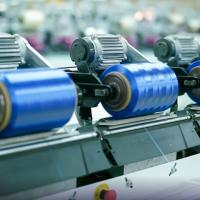The shipping container was invented in the 1950s — and it revolutionized the global supply chain.
“In the last 50 years, there’s no technology that has lifted more people out of poverty and created more economic opportunities than the shipping container,” says Ryan Petersen, CEO of Flexport.
Still, shipping goods around the world is incredibly complicated and hard to do. And when patterns of consumer demand change — like in a global pandemic — the supply chain often can’t keep up and cracks in the model are exposed. As a consequence, money and time are often wasted.
In 2013, Ryan Petersen decided that he “just couldn’t rest” until he solved these dysfunctions in the global supply chain.
The result was Flexport, a user-friendly software platform that can track shipments, provide updates, communicate, and upload documents to ensure successful deliveries.
Disrupting the shipping industry
Traditionally, global logistics has lacked transparency. It’s a complex system that involves the production of goods, pickup from the factory, delivery to a warehouse, consolidation of goods, and a truck that brings it to a port. Then, a customs broker gets it ready to ship out of the country.
At this point, “we’re at like six or seven companies, and we haven’t even left the origin country yet,” Petersen explains. All of this usually happens through a messy trail of paperwork, including spreadsheets, emails and printed records.
Flexport changes that — its digital platform simplifies the process.
“We connect all of the asset owners, the people who own ships, planes, trucks, warehouses, all the importers and exporters, government agencies, and bring it all together to make it seamless,” Petersen says.
“That way, you “actually know where your stuff is.”
An evolving mission
At first, Petersen imagined that Flexport would serve as a sort of “Turbo Tax for importing” — a software that just does the necessary paperwork for companies. But like most founders, his vision grew over time.
“Now five to six years later, and what we’ve built is a technology platform for global logistics to ship any product anywhere on planet Earth.”
Today, Flexport sends over 200,000 shipping containers across the globe.
While Petersen and his team have seen enormous success that doesn’t mean his job as a founder and CEO gets any easier.
“It gets harder and harder,” says Petersen. “You’re learning new classes of problems constantly, and you haven’t even solved the last problems yet.”
But solving hard problems is the value Flexport adds to the supply chain.
“The thing about Flexport is that our job is to solve problems, to make global trade easier for everybody,” he says.
“So if there’s something that’s making global trade harder, all of these are opportunities for us to step up with our expertise to help them solve that problem.”
And this year, Petersen and Flexport have stepped up in a big way. Thanks to the pandemic lockdowns, parts of the global supply chain were shut down, and meanwhile, consumer demand skyrocketed — this combination has thrown the supply chain into chaos.
Many solutions are needed to solve this crisis — and Petersen has offered his ideas to government officials.
“The circulatory system our globalized economy depends on has collapsed. And thanks to the negative feedback loops involved, it’s getting worse not better every day that goes by,” said Petersen, who proposed that the bottleneck at the Port of Long Beach was the lack of yard space at the container terminal. Without yard space, ships can’t unload new shipping containers.
And city officials are listening to his ideas — and in this case, have allowed more shipping containers to be stacked on top of each other which allows for more yard space at the terminal. This won’t fix the global supply chain, but it’s a step in the right direction.
So how do you go from envisioning a simple “Turbo tax for importing” to scaling a world class company that has a direct impact on the global economy and the ears of government officials?
It’s not easy — there’s bound to be struggles and pain along the way. But for Petersen, a deep understanding of the company’s vision — and just how big an impact you can have in the world — is the key to pushing through the growing pains that will inevitably arise.
“If what you’re trying to achieve is important enough, then you’ll overcome all the pain.”


